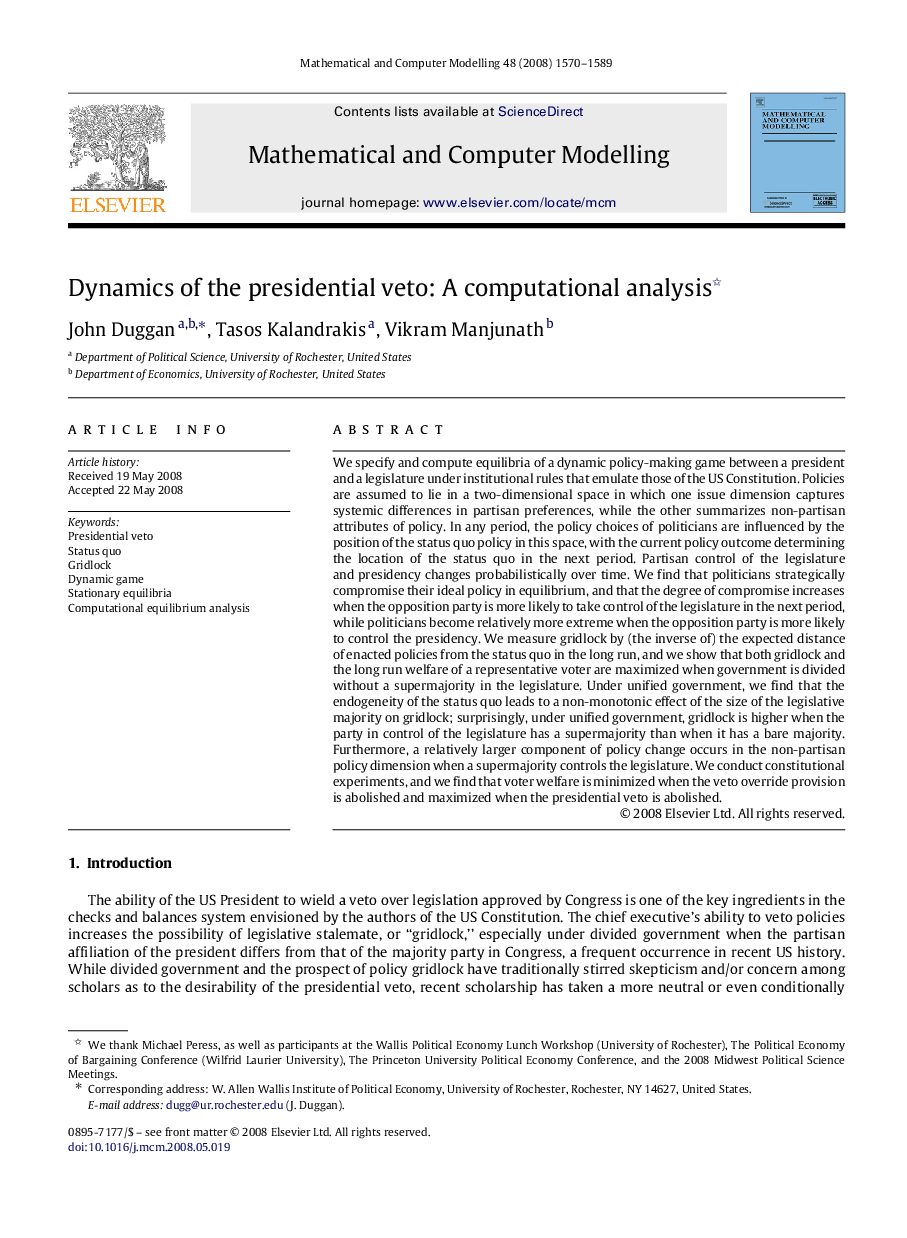| کد مقاله | کد نشریه | سال انتشار | مقاله انگلیسی | نسخه تمام متن |
|---|---|---|---|---|
| 1137632 | 1489188 | 2008 | 20 صفحه PDF | دانلود رایگان |

We specify and compute equilibria of a dynamic policy-making game between a president and a legislature under institutional rules that emulate those of the US Constitution. Policies are assumed to lie in a two-dimensional space in which one issue dimension captures systemic differences in partisan preferences, while the other summarizes non-partisan attributes of policy. In any period, the policy choices of politicians are influenced by the position of the status quo policy in this space, with the current policy outcome determining the location of the status quo in the next period. Partisan control of the legislature and presidency changes probabilistically over time. We find that politicians strategically compromise their ideal policy in equilibrium, and that the degree of compromise increases when the opposition party is more likely to take control of the legislature in the next period, while politicians become relatively more extreme when the opposition party is more likely to control the presidency. We measure gridlock by (the inverse of) the expected distance of enacted policies from the status quo in the long run, and we show that both gridlock and the long run welfare of a representative voter are maximized when government is divided without a supermajority in the legislature. Under unified government, we find that the endogeneity of the status quo leads to a non-monotonic effect of the size of the legislative majority on gridlock; surprisingly, under unified government, gridlock is higher when the party in control of the legislature has a supermajority than when it has a bare majority. Furthermore, a relatively larger component of policy change occurs in the non-partisan policy dimension when a supermajority controls the legislature. We conduct constitutional experiments, and we find that voter welfare is minimized when the veto override provision is abolished and maximized when the presidential veto is abolished.
Journal: Mathematical and Computer Modelling - Volume 48, Issues 9–10, November 2008, Pages 1570–1589